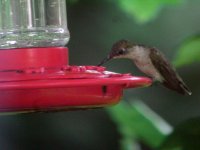FrankD
Well-known member
Ok, I would like to discuss two issues at this point.
One, I believe I know where the resolution problem with this setup stems from. The resolution chart.
Steve...I put your "good one" aside last week and was not able to find it today when I went to do the test. I went back online and found a post of yours that had a copy of the resolution embedded in it. I printed out that copy. Even enlarging the chart to twice its normal size I cannot resolve lines 1-5 or 1-6 with my naked eye when the paper is held directly in front of me. The problem isn't my eyes but rather the print quality of the chart.
I do have a 'negative" resolution chart picture also saved. Let me see if the print quality is better with that one.
Second, with regard to the eyepieces, I am a bit confused. Based on previous findings with the Pentax XW and Baader Hyperion eyepieces I expected to find field of view obstructions with several of the eyepieces that CP provided. The truth is that I did not have obstructions with some of the wider apparent field of view eyepieces (70 degree Smart Astronomy in particular) and yet did see the obstruction with some reportedly narrower field of view eyepieces.
Pardon the layman's terminology but....what gives?
One, I believe I know where the resolution problem with this setup stems from. The resolution chart.
Steve...I put your "good one" aside last week and was not able to find it today when I went to do the test. I went back online and found a post of yours that had a copy of the resolution embedded in it. I printed out that copy. Even enlarging the chart to twice its normal size I cannot resolve lines 1-5 or 1-6 with my naked eye when the paper is held directly in front of me. The problem isn't my eyes but rather the print quality of the chart.
I do have a 'negative" resolution chart picture also saved. Let me see if the print quality is better with that one.
Second, with regard to the eyepieces, I am a bit confused. Based on previous findings with the Pentax XW and Baader Hyperion eyepieces I expected to find field of view obstructions with several of the eyepieces that CP provided. The truth is that I did not have obstructions with some of the wider apparent field of view eyepieces (70 degree Smart Astronomy in particular) and yet did see the obstruction with some reportedly narrower field of view eyepieces.
Pardon the layman's terminology but....what gives?




